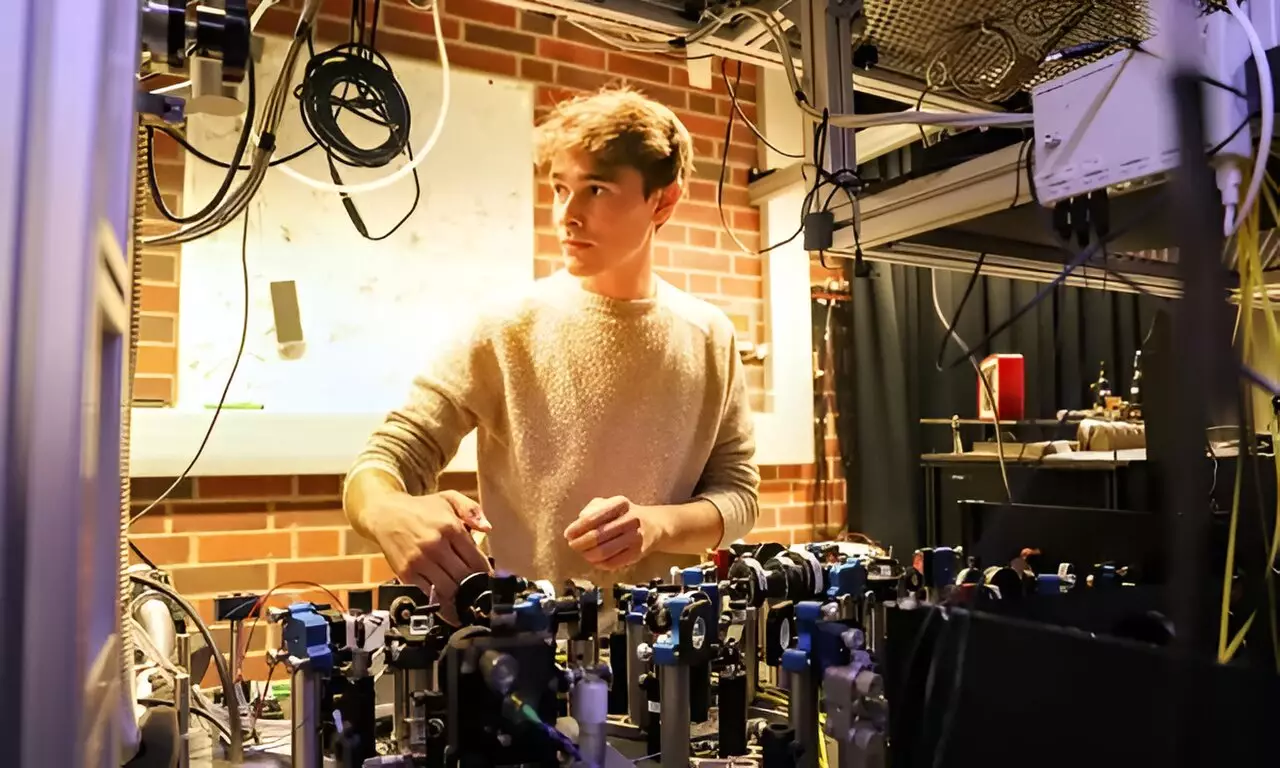In recent years, quantum mechanics has unveiled a plethora of phenomena that challenge our classical intuition. Among these, entanglement and interference stand as pivotal concepts, demonstrating the fascinating intricacies of quantum systems. A recent study led by researchers from the Department of Experimental Physics, in collaboration with institutions from Germany and the U.K., has made significant strides in understanding how these two quantum properties interact, particularly in systems consisting of more than two particles. This investigation not only deepens our comprehension of quantum behavior but also hints at advancements in quantum technology applications.
At the heart of quantum mechanics lies entanglement, a phenomenon where particles become interconnected in such a way that the state of one particle instantly influences the state of another, regardless of the distance separating them. This non-classical correlation puzzled physicists for decades, and its implications continue to spark considerable interest in both theoretical and experimental physics. The recent research attempts to untangle the complexities surrounding entanglement in multi-particle systems, paving the way for a more profound understanding of quantum states.
Interference is a hallmark of both classical and quantum physics, where the superposition of waves can lead to enhanced or diminished intensity depending on their phase relationships. In the quantum realm, interference patterns arise from the probability amplitudes of potential outcomes, revealing a rich tapestry of interaction among particles. Tommaso Faleo, one of the leading researchers, highlighted the aim of their study: to examine how entangled multi-particle systems produce interference patterns that diverge from the simpler two-particle cases previously explored.
The Hong-Ou-Mandel experiment, conducted in 1987, revealed significant insights into two-particle interference, serving as a cornerstone for understanding quantum behaviors in optics. However, as we move to multi-photon systems, the complexity escalates exponentially, necessitating an examination of how entangled particles influence collective interference.
As the study delved deeper into multi-particle dynamics, researchers observed that interference patterns displayed a level of complexity that had not been seen in simpler configurations. The relationship between the particles, specifically in entangled states, introduced new factors into the interference equations. The presence of entanglement allowed researchers to bridge gaps previously thought to inhibit interference, creating a collective effect reliant on the configuration of all particles involved.
This intricate dance of particles reveals that when some particles are entangled, they can influence interference, leading to patterns and behaviors that are inscrutable when one considers particles in isolation. The findings demonstrated that the interference pattern is not merely a superposition of probabilities but rather a unique outcome predicated on the holistic state of the entire system.
The implications of this research extend beyond theoretical inquiry, venturing into the realm of practical applications. As quantum technologies continue to evolve, understanding the interplay between entanglement and multi-particle interference can facilitate advancements in quantum computing, cryptography, and communication systems. The insights gleaned from this study highlight the potential for harnessing these complex dynamics, which could lead to the development of more robust quantum systems capable of performing computations and transmitting information more efficiently than their classical counterparts.
The investigation into the relationship between entanglement and interference in multi-particle systems marks a significant milestone in quantum physics. By revealing how these two quintessential properties interact, the research opens new avenues for exploring the complexities of quantum mechanics. As we continue to probe deeper into the fabric of the quantum world, the discoveries made in this study illuminate paths toward enhanced quantum technologies, promising a new era of innovation defined by the principles of entanglement and interference. As we unravel these complexities, we not only enhance our theoretical understanding but also lay the groundwork for practical applications that could revolutionize the future of technology and communication.

